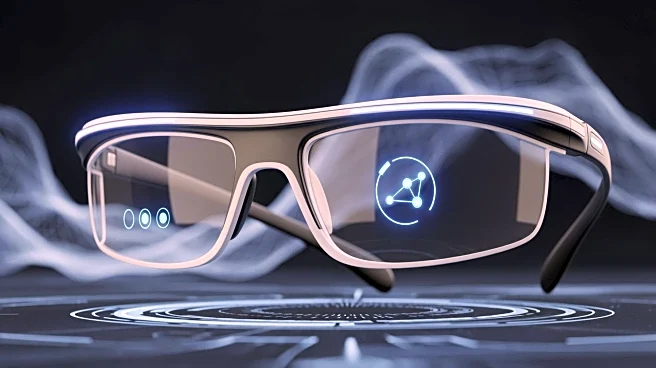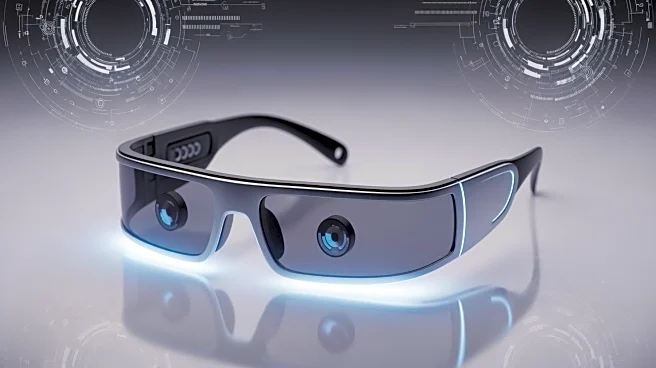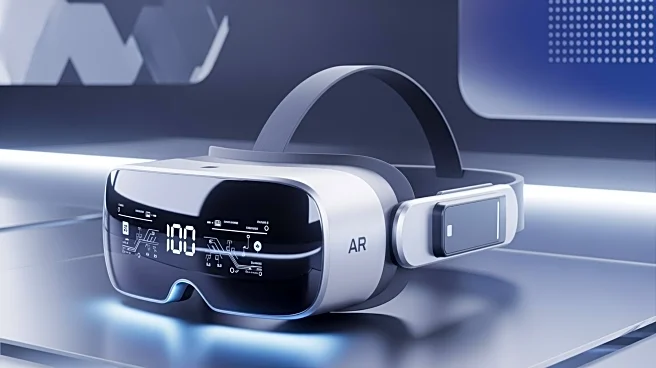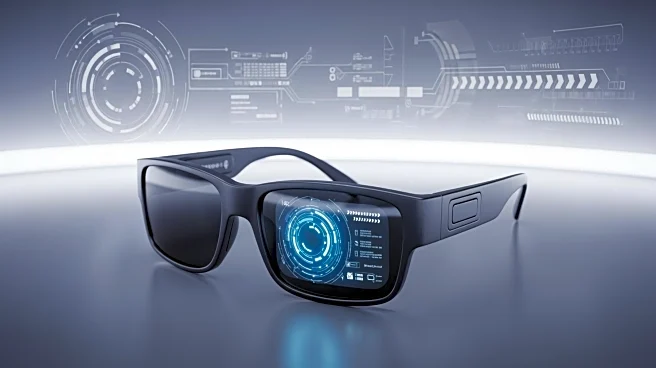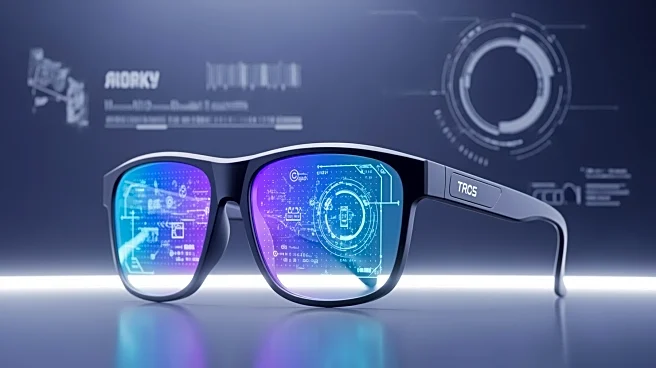What's Happening?
Meta has unveiled a new 'quick connect' feature for its augmented reality (AR) glasses, allowing users to make calls and send texts without the need for voice commands. This update is part of a broader
trend in 2025 where AR technology is transitioning from prototype to practical daily use. The Ray-Ban Meta Gen 2 glasses, reviewed by Wired, boast an 8-hour battery life and improved audio quality, making them viable for all-day wear. Additionally, Form has launched HeadCoach 2.0, integrating AI coaching into swim goggles, providing real-time feedback for athletes. These developments indicate a shift in AR technology towards solving specific, high-value problems and enhancing user convenience.
Why It's Important?
The introduction of features like 'quick connect' in AR glasses represents a significant step towards mainstream adoption of augmented reality technology. By reducing reliance on voice commands, Meta's update addresses a common user friction point, potentially increasing the appeal of AR devices for everyday use. The extended battery life and enhanced audio quality of the Ray-Ban Meta Gen 2 glasses further support this transition, making AR glasses more practical for daily activities. The integration of AI coaching in swim goggles by Form highlights the potential of AR to provide specialized solutions, which could lead to broader applications in various industries. These advancements could drive consumer interest and investment in AR technology, positioning it as a key player in the tech market.
What's Next?
As AR technology continues to evolve, we can expect further enhancements in user interface and device capabilities. Meta's focus on reducing user friction and improving device functionality may lead to increased adoption rates and more competitive pricing. The $300 price point for AR devices is seen as a risk-opportunity signal, potentially lowering barriers for consumers to test and adopt the technology. Retail applications, such as virtual try-ons, are likely to expand, offering practical benefits like reduced returns and faster purchasing processes. Industry voices are emphasizing the importance of social and ergonomic acceptance, which will be crucial for widespread adoption. Continued innovation and consumer feedback will shape the future trajectory of AR technology.
Beyond the Headlines
The cultural acceptance of AR devices is a critical factor in their success. As technology becomes more integrated into daily life, questions about privacy, data security, and social norms will arise. The ability of AR devices to blend seamlessly into everyday activities without drawing attention or causing discomfort will be key to their long-term viability. Additionally, the development of AR technology raises ethical considerations regarding surveillance and data collection, which will need to be addressed by manufacturers and policymakers. The potential for AR to replace in-person interactions, such as coaching, also presents opportunities and challenges in terms of human connection and the value of personal experiences.
